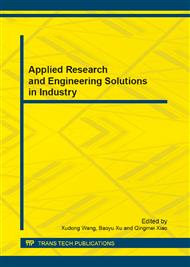p.323
p.328
p.332
p.337
p.341
p.345
p.350
p.354
p.358
Statistical Optimization of Synthesis of β-Methylhydrogen Itaconate
Abstract:
β-Methylhydrogen itaconate was synthesized with itaconic acid and methyl alcohol and using benzoyl chloride as catalyst. The important variables (reaction temperature, reaction time and substrate mole ratio) were optimized by Box-Behnken central composite design under response surface methodology. The statistical analysis showed that the optimum reaction conditions (temperature 58.98 °C, time 0.5 h and substrate molar ratio 3.71) led to a maximum yield (99.2%).
Info:
Periodical:
Pages:
341-344
Citation:
Online since:
February 2013
Authors:
Price:
Сopyright:
© 2013 Trans Tech Publications Ltd. All Rights Reserved
Share:
Citation:


